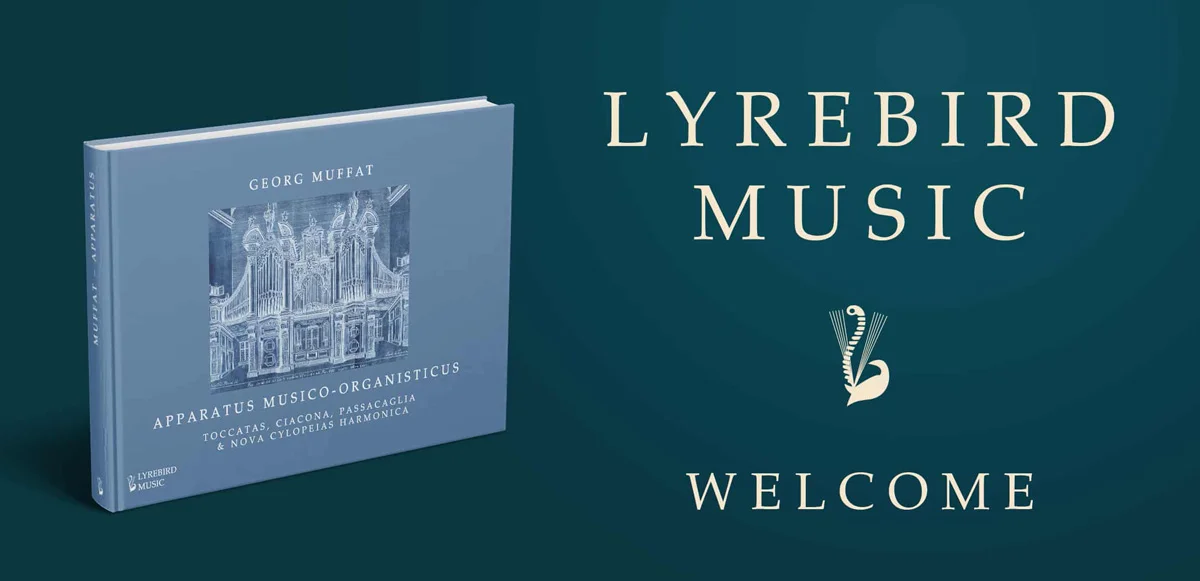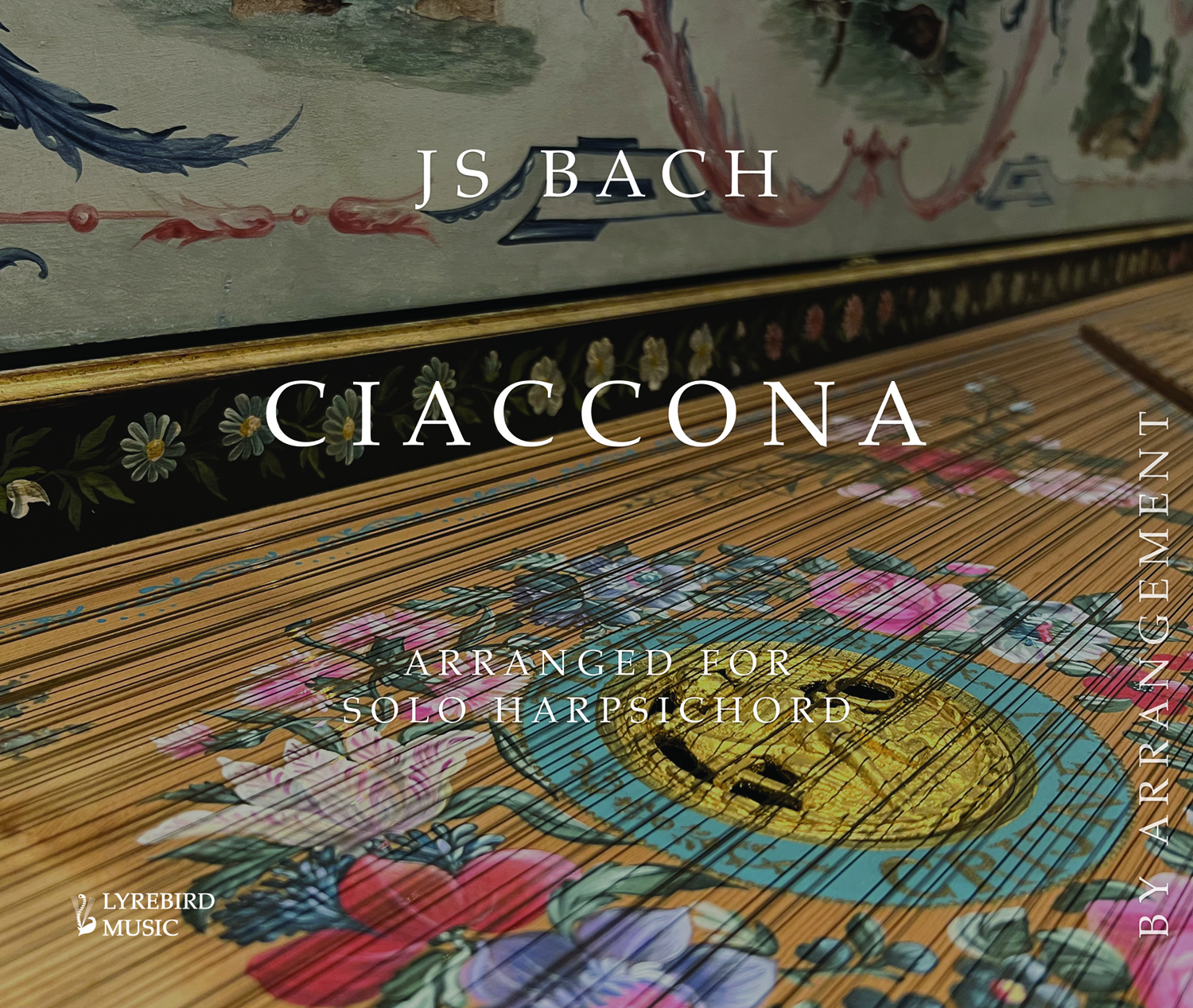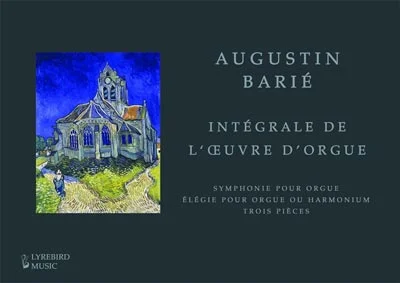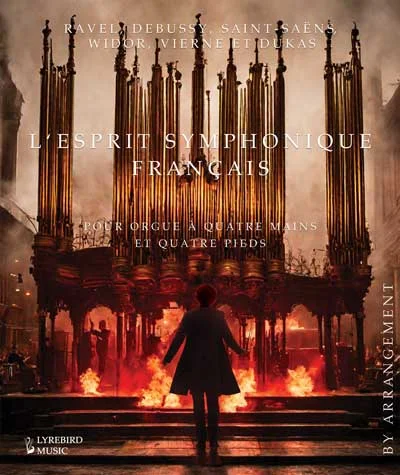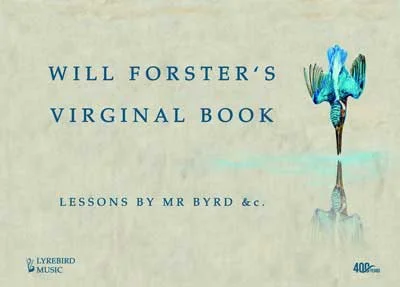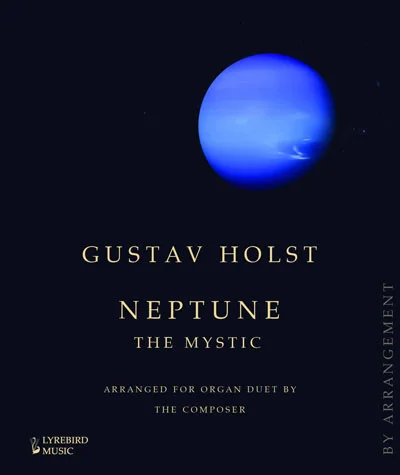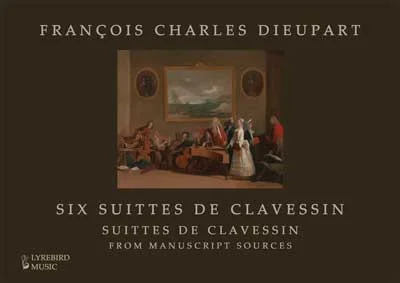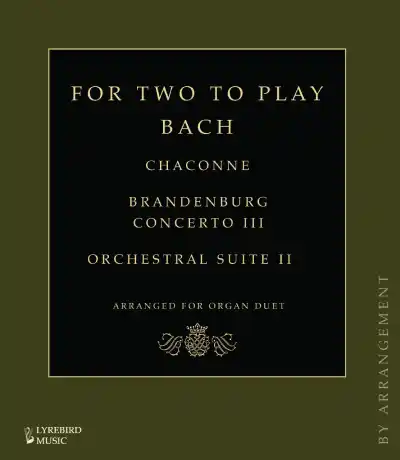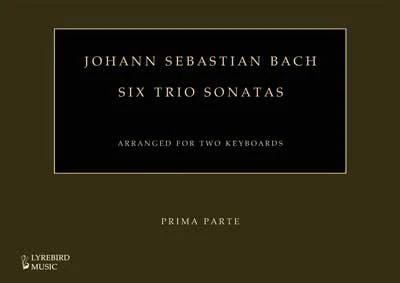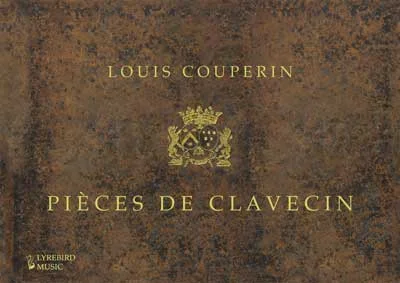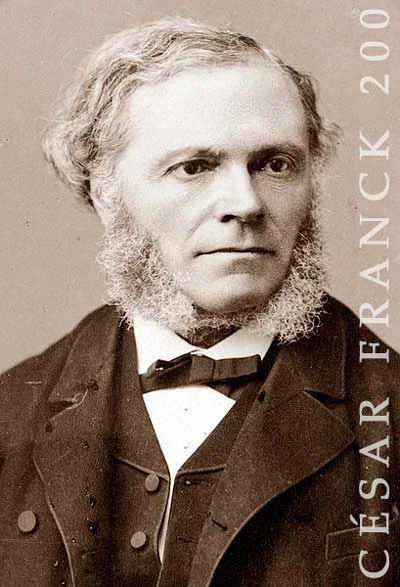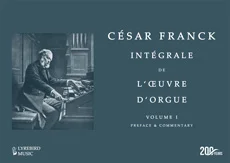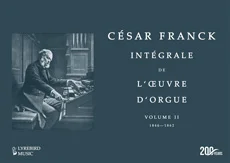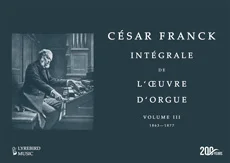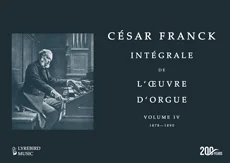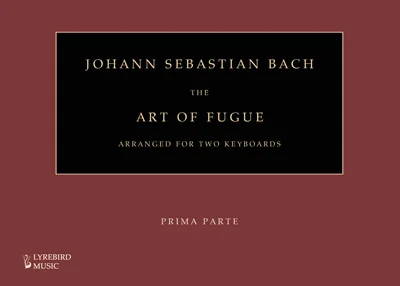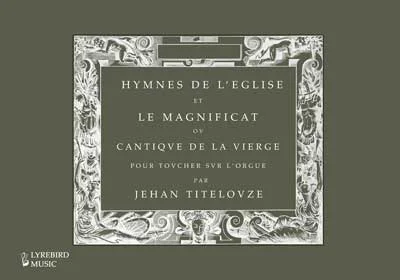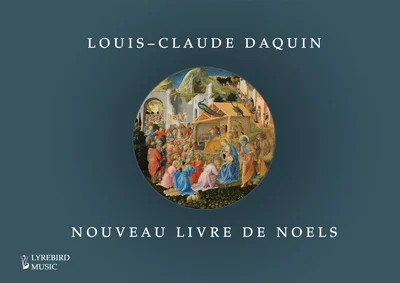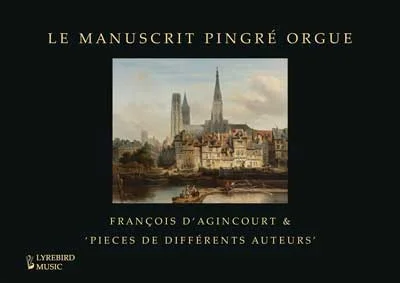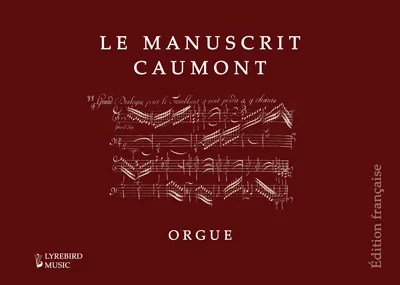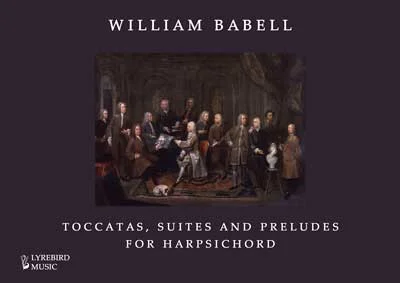W E L C O M E !
Lyrebird Music is an independent publisher of critical editions of keyboard music, which was founded in late 2020. Our 40 or more publications range from the sixteenth century until the late Romantic period, and our emphasis is on scholastic performing editions that fill gaps other publishing houses avoid. Our catalogue includes the first editions in over a century of The Fitzwilliam Virginal Book and My Ladye Nevells Booke, Anne Dawson, Her Book (1716) –– which contains a remarkable collection of Vivaldi concerti transcriptions and occasional pieces by European composers, a new source of Rouennais organ music, Le Manuscrit Caumont Orgue and the first edition in nearly half a century of François Couperin’s Pièces d’Orgue and, in 2022, a new edition of César Franck’s organ music that marks the bicentenary of the composer’s birth has been joined by the first edition in nearly forty years of Louis Couperin’s harpsichord music. 2023 saw the first-ever edition of Will Forster’s Virginal Book, a major source of William Byrd’s keyboard music––released to mark the 400th anniversary of the composer’s death––and a critical edition of the complete organ music of Augustin Barié.
Our mission is straightforward: Lyrebird insists on the highest quality of its editors and underlines the importance of performance practice. We strive to reproduce as many aspects of original editions and manuscripts as is sensible, placing today’s players closer to the music, its composer and those who first played it. Please read on to find out more!
New
J S Bach: Ciaccona (Partite no. 2 for solo violin, BWV 1004), arranged for harpsichord
Arranged by Pieter-Jan Belder Yehudi Menuhin described the Ciaccona from the D minor violin partita (BWV 1004) as ‘the greatest structure for solo violin that exists’. His praise is amplified in the numerous keyboard versions that have come down to us. These include arrangements for solo piano by Johannes Brahms, Robert Schumann and Ferruccio Busoni, and other versions have appeared for one hand, piano duet and, more recently, for four hands and feet at the same organ (Lyrebird Music, LBMP–038). Remarkably, few versions have been published for the harpsichord, which Pieter-Jan Belder addresses in this astonishing arrangement, which he first recorded on his CD Basso Ostinato: Passacaglias and Chaconnes (Brilliant Classics 95656). Belder’s version is here provided twice, allowing performers a choice of using basso continuo or fully realised passages for the chaconne’s highly rhetorical arpeggiated sections.
I must say how handsome all your productions are! But also the sheer wealth of information in the prefaces puts me so much in mind of the scant info we as younger players had to piece together when embarking on French Baroque music in particular! To have so much info in one place finally is a huge help for young players, and also helps older players to remember what they painstakingly pieced together years ago!
New
Le Livre d’Orgue de Limoges
The renowned organist Michel Chapuis once described Le Livre d’Orgue de Limoges as ‘one of the most superb discoveries of the last 50 years’. The manuscript was probably copied during the 1770s or later, and although no composers’ names are provided, we know the music of three from other sources: André Raison, Gilles Jullien and Gaspard Corrette. However, these make up just thirteen of its 53 pieces. The manuscript’s anonymous scribe carefully chose an erudite series of versets, including a suite on the hymn Ave Maris Stella and the only known paired pieces in the French Classical repertoire. In an extended preface, this new critical edition examines the music, how and why manuscripts came into being, registration and aspects of performance sourced from Marie-Dominique-Joseph Engramelle and Dom Bédos de Celles, whose own publications are ideally suited to the manuscript’s date.
Augustin Barié: Intégrale de l’Œuvre d’Orgue
The sudden death of Augustin Barié in 1915 robbed the world of one of its most promising composers. With an output of just three publications, the five-movement Symphonie pour Orgue, the evocative Élégie and Trois Pièces, Barié was destined to become a composer equal to his teacher Louis Vierne and Charles-Marie Widor. The English writer on music, Harvey Grace, described Barié as ‘a young man, [who] seems likely to loom large in French organ music’, and Vierne described his pupil’s music as audacious in its harmony, with rich polyphony, elegant design, and poetic detail. This edition is the first time the collected works have been edited and brought together in print. The music contains alternative solutions to challenging passages, and the preface discusses aspects of performance. A complete critical commentary provides further solutions for fingering and, as an appendix, includes the first English translation of René Vierne’s invaluable Méthode pour Orgue-Harmonium.
English
New! L’Esprit Symphonique Français
A new and exciting volume of duets for the organ (four hands and four feet) of French symphonic music. Composers often transcribed symphonic compositions for the orchestra for either piano duo or duet. Although intended for piano, their orchestrations were inevitably reduced to suit the new media, though these rarely capture more than a ‘black and white’ picture, despite the originals being so rich in orchestral colours. However, using four hands and four feet makes it possible to incorporate all the orchestral parts and reorchestrate (or we might even say ‘colourise’) all these versions, allowing us to return to the composers’ original thoughts. It is a sort of round trip: from the orchestra to the piano reduction and from that version to the organ. This allows us to take a fresh look at these masterpieces and reintroduce them to the public in a new and exciting manner.
Français
L’Esprit Symphonique Français
Un nouveau et passionnant volume de duos pour orgue (quatre mains et quatre pieds) de la musique symphonique française. La musique symphonique a souvent été transcrite pour piano à 4 mains ou pour 2 pianos par les compositeurs eux-mêmes. Mais ces versions alternatives sont nécessairement réductrices et ne capturent qu’une image en noir et blanc de ces œuvres pourtant si riches de couleurs orchestrales. A l’orgue, quatre mains et quatre pieds permettent non seulement un rendu exhaustif du texte originel pour orchestre, mais également une colorisation, en une sorte de voyage aller-retour ; depuis l’orchestre au piano-réducteur, puis du piano vers l’orgue-orchestrateur. De cet esprit symphonique français, le duo Vernet-Meckler revisite quelques chefs-d’œuvre pour les faire redécouvrir sous de nouveaux habits.
Will Forster’s Virginal Book –– Lessons by Mr Byrd &c
The copying of Will Forster’s Virginal Book was completed on ’29 Januarie’ 1629, when the Forster of the title appended his signature to the index page. We know much about Forster since he was an important member of his guild and, fortunately, because records of his life survived the Great Fire of London in 1666. Forster had a ‘harpsicall’ and a large chest of viols, which were to be divided between his children after his death in 1645.
It is one of the most important Jacobean keyboard sources, and music by William Byrd makes up over half of its 72 pieces. Despite this, the book has never previously been edited. This edition, from the desks of Jon Baxendale and Francis Knights, coincides with the 400th anniversary of Byrd’s death on 4 July 1623.
Gustav Holst: Neptune, The Mystic (The Planets, Op. 32), arranged for organ duet by the composer
Edited by Olivier Vernet and Cédric Meckler
Series: Lyrebird By Arrangement
A second book from the pens of Vernet and Meckler comes in the guise of a short critical edition of Gustav Holst’s own arrangement for organ duet of this mystical movement from The Planets. This is the first edition of this remarkable and effective work that requires experimental techniques both in registration and keyboard effects.
The arrangement of ‘Neptune’ was made before being substituted with a version for two pianos, probably for the sake of dissemination and to provide consistency by integrating the movement into the entire suite in its new version for two keyboards.
Holst’s original choice of the organ duet is unusual for its time, as is his use of the organ, which relies on subtle and continual changes of registration and keyboards.
François Charles Dieupart – Suittes de clavessin | Suittes de clavessin from manuscript sources
François Charles Dieupart (1676–1751) is one of the French baroque school’s most charming and approachable composers. Although he lived in England for a large portion of his life, his only compositions for solo keyboard were written before he left Paris for London in 1699. Éstienne Roger published Six Suittes de Clavessin, mises en concert in 1700 in two books: one for solo harpsichord and an ensemble version for violin or flute and continuo. In addition, Charles Babel and an unknown Austrian scribe copied some of his suites in variant forms alongside others not known elsewhere.
This is the first modern edition to bring together all of Dieupart’s keyboard music and includes the ensemble version of Six Suittes with photocopiable instrumental parts. Editor Jon Baxendale discusses the composer, his music and the sources and provides notes on performance that include the character of French keyboard music, fingering and ornamentation.
Lyrebird Music has established a well-deserved space in the music-publishing industry: high quality and carefully considered editions offer something new for experienced and inexperienced players alike. Well-reasoned and thorough scholarship has guided editorial decisions, but these processes do not get in the way of the music itself. Players are left confident and free to consider their own musical decisions, in the knowledge that the music they find has come from carefully selected original sources. With its dedicated ethos, expert editorial team, and multiple specialisms, Lyrebird is an exciting enterprise to watch in the coming years.
For Two To Play Bach
Arranged by Olivier Vernet and Cédric Mackler
Bach was a great transcriber not only of his own works but also of others, manifesting in several organ arrangements that include the fugue from his Violin Sonata (BWV 1001) and concertos by, among others, Antonio Vivaldi, Georg Philipp Teleman and Alessandro Marcello. The arrangements in this book go one step further in that they are for two organists at the same instrument. The Chaconne from the Partita for Solo Violin (BWV 1004) takes Bach’s model as a uniquely expressive starting point that finds inspiration in the piano accompaniments composed by Robert Schumann and Felix Mendelssohn and the transcription of Carl Reinecke. Brandenburg Concerto No. III needs no introduction to music lovers, though few will have heard it as an arrangement for four hands and four feet at the same instrument. The final duet is an arrangement of Bach’s second Orchestral Suite in B minor, arranged for keyboards alone. This makes it equally playable on any keyboard or a combination of two instruments.
Since 2006, the Vernet-Meckler Organ Duet has dazzled audiences worldwide, promoting a novel repertoire of organ music for four hands that has achieved numerous awards and acclamations. In addition to concert activities, the Vernet-Meckler Organ Duet devotes much time to researching and developing organ duet repertoire and playing new music written especially for them. Together, they have recorded over a dozen CDs.
JS Bach: Six Trio Sonatas, Arranged for Two Keyboards
A third in his series of Bach arrangements for two keyboards, Francis Knights has organised the Bach’s six trio sonatas for performance on two keyboards. They follow his arrangements of The Art of Fugue and six organ preludes and fugues, also for two performers. The music is contained in two hardback volumes, prima and seconda, with page turns organised to facilitate performance.
Louis Couperin: Pièces de clavecin
A new critical edition of Louis Couperin’s Pièces de clavecin from the desk of editor Jon Baxendale. The new edition contains all the available works, with a clean engraving that maintains the visual aspects of the original sources.
A substantial preface of over 20,000 words looks at the composer, his music, rhetoric, ornamentation and a host of other topics including tips on playing the most baffling pieces of the baroque, the so-called préludes non mesurés.
A full critical commentary discusses difference in the two principal sources, the Bauyn and Parville manuscripts, providing alternative readings from other sources (both manuscript and printed), suspected errors and possible alternative readings.
JS Bach: Eight Organ Preludes & Fugues, Arranged for Two Keyboards
Bach’s major organ Preludes & Fugues are among the most difficult works written for the instrument. They were likely composed for recital rather than liturgical use, and for practical reasons were probably usually practiced at home on pedal harpsichord and pedal clavichord rather than in church. Within the Bach household there was also a tradition of composing for pairs of keyboards, and this edition presents arrangments of eight organ Preludes & Fugues for keyboard duo (harpsichords, clavichords, organs or pianos), turning virtuoso solo works into more approachable chamber music repertoire. The arrangements have been made from the best surviving manuscript and printed sources, and full advantage has been taken of the possibilities of dialogue between two instruments.
This is the third set of duos from JS Bach or members of the Bach family, including:
LBMP–023: The Complete Keyboard Duos by the Bach Family
Scholastic Editions
Our editions are prepared by renowned scholars and performers, contain full critical reports and notes on background, performance practice, and style.
Critically Acclaimed
Our work has been critically acclaimed in leading early music and professional journals, and has caught the eye of a number of performers for recordings and videos.
Quality
As musicians we understand the need for quality material and provide the option of either hard- or wire-bound editions printed on heavy paper to ensure a lifetime of use.
Hard Copy and Digital
Musicians’ needs vary as time progresses. Lyrebird scores are now available for the first time as digital downloads at a smaller cost, allowing you to print or save to your tablets.
César Franck 200: Intégrale de l'œuvre d'orgue
A critically acclaimed edition to mark the bicentennial of Franck’s birth comes from the desk of Richard Brasier. This fine collection has been two years in the making and leaves no stone unturned in understanding Franck, the composer, the musician, his music and its performance.
The edition is published in four handsome hardback volumes and designed for a lifetime’s use. The 140,000-word preface and commentary is contained in the first, allowing performers an option rarely provided in critical editions: the ability to consult the editor’s comments on the music without having to constantly flip to the back of the book! Volumes II–IV cover the three stages of Franck’s development as an organ composer: Volume II deals with music from the years 1846–1862 and contains previously unpublished material; Volume III has pieces from 1863–1877; while Volume IV contains the mature works written between 1878 and the composer’s death in 1890.
Richard has sourced all the known Franck autographs in his quest and has made some surprise discoveries along the way that will turn quite a few heads in the process.
Read More …
- A foreword by renowned Franck scholar, Marie-Louise Langlais
- An erudite preface and commentary of 140,000 words, accompanied by 219 examples, colour images, plates and facsimiles
- A thorough re-evaluation of the organ works based on every available manuscript
- The first edition since 1880 to make use of the autograph manuscript for Prélude, Fugue et Variation, Op. 18
- The first published analysis of the autograph manuscript for Prélude, Fugue et Variation, Op. 18
- The first publication to treat both versions of Andantino CFF 54a and CFF 54b as independent works
- The first publication of the original ending of Final, Op. 21
- New versions of Choral II and Choral III, based solely on the autograph manuscripts
- Full colour facsimile of Pièce Héroïque (Trocadéro manuscript)
An immense work, meticulous, detailed with the greatest skill. In short, a musicological edition of reference in which I am happy and proud to have participated.
The must-have edition –– at least for the Trois Chorals –– of César Franck’s music. Concerning the chorals, here is finally the edition that takes into account the family’s sketches and manuscripts and those auctioned off a few years ago. Having worked at length on the subject in recent years, especially the quest for manuscripts, I say ‘bravo‘ to Richard Brasier and ‘bravo‘ to Lyrebird Music for bringing all the sources together with clarity and intelligence. There you will finally discover the variations of records, notes and rhythms, as well as other details that almost no one knew until now. To many, mysteries will be revealed and errors corrected. An edition not to be missed.
JS Bach: The Art of Fugue Arranged for Two Keyboards
Bach completed his first version of the Art of Fugue in 1742 (Lyrebird Music LBMP-013), at about the same time as composing or collecting together the 24 Preludes and Fugues that comprise the second book of the Well-Tempered Clavier. However, he decided to continue working on and greatly expanding the Art of Fugue, a process that he had nearly completed by his death eight years later. The work was then engraved and published by C. P. E. Bach, with a slightly revised edition being printed in 1752. Although almost all of the work can be played on a single keyboard instrument, a pair of harpsichords, clavichords, organs or other keyboards provide an effective medium for the complete work, and this new arrangement is supplemented by the completion of the final fugue made by Donald Tovey (1931), and the quadruple invertible fugue he composed to fulfil the Obituary’s description of the work’s missing final fugue.
Jacques Boyvin: Deux livres d’orgue (1690 & 1700)
The final publication in our Rouennais composer quintet, the organ books published by Jacques Boyvin in 1690 and 1700. Boyvin’s music has received little scrutiny in recent years, though his compositional style is unlike his Parisian contemporaries and surpasses most in his use of timbres and the techniques required to play his pieces.
A full commentary and discussion of Boyvin’s performance instructions, along with notes on articulation, fingering and notes inégales accompanies the music.
Jehan Titelouze: Hymnes de l’église et Le Magnificat
A new look at Jehan Titelouze’s Hymnes de l’église (1623) and Le Magnificat (1626), the first commercially available edition of the complete music since that of Alexandre Guilmant in the early 1900s.
Editor Jon Baxendale has retained all aspects of the original Pierre Ballard publications, including beaming and proportional time signatures and an erudite preface discusses the music and such aspects of performance as registration, notes inégales and ornamentation. Included are the plainsong settings of the twelve hymns and Magnificat tones.
My copy of the new Lyrebird edition of Franck arrived today. In our age of free downloads of old editions, its cutting-edge scholarship and elegant quality prove that new high-end editions are still essential.
Louis-Claude Daquin: Nouveau livre de Noëls
Louis-Claude Daquin’s remarkable keyboard style was the wonder of Paris, if not beyond, with accounts of his improvisation filling popular press articles and the pages of books. He published only two books in a life that spanned nearly eighty years, a collection of harpsichord suites (1735) and the twelve noëls contained in this volume.
In the first edition for nearly 70 years, Daquin’s music has been given a much-needed reworking in this Lyrebird publication. The preface examines the achievements of Daquin, discusses the music, its role, registration and performance. While keeping to Lyrebird’s pioneering practices of retaining as many visual aspects of the original imprint as possible, this new publication has been organised to facilitate page turns without interrupting the flow of a performance.
Le Manuscrit Pingré Orgue
Copied by the renegade priest, mathematician, astronomer and revolutionary, Le Manuscrit Pingré Orgue is part of the collection left by Guy-Alexandre Pingré to the Bibliothèque Saint-Geneviève in Paris, at which he served as Librarian after the French Revolution. The music was possibly copied during Pingré’s stay in Rouen, where he was the first professor of astronomy between 1749 and 1750, and contains the only known organ works of Rouen Cathedral organist, François D’Agincourt. Another unattributed 39 pieces, some of which are by D’Agincourt’s predecessor at the cathedral, Jacques Boyvin, are found in a section titled ‘Pieces de différents Auteurs’. For the first time, these charming miniatures are edited as a single volume in Lyrebird Music’s collection of Classical French organ music. A comprehensive preface by editor Jon Baxendale discusses the copyist, the music, its registration and performance.
Le Manuscrit Caumont Orgue
A new and exciting discovery of a previously unknown manuscript in a private French collection. Le Manuscrit Caumont Orgue contains 111 pieces in Tones V and VI of which only 28 are known in other collections. The unknown music includes work by Nicolas Lebègue and Jacques-Denis Thomelin and 80 anonymous pieces which are undoubtedly by the composer Jacques Boyvin.
This manuscript is so important that we have published it in two editions, one English and one French. Its preface discusses the manuscript and its contents at length, discusses Jacques Boyvin’s writings on performance and registration, and discusses other aspects of performance style.
Parthenia and Parthenia In-Violata
Parthenia was published in c. 1612 as a wedding gift to Princess Elizabeth and the Elector Palatine of Heidelberg, Frederick V. The book contains 19 pieces by the three greatest composers of the time, William Byrd, John Bull and Orlando Gibbons. Parthenia is known not only for these works but also because it was the first engraved English music book. Its sister volume, Parthenia In-Violata was published some years later and is scored for virginals and bass viol. While its contents are not as lofty as the earlier book, they are, nevertheless charming and tell us much about the domestic music-making in England in the reign of James I.
This new edition by Jon Baxendale and Francis Knights looks at some of the myths behind the publications, discusses their performance. Included are photocopiable parts for performance with a stringed bass instrument.
The quality of these hard-backed volumes, generally edited by Jon Baxendale is second to none with extensive performance notes, registration tips included. It is clear this is a labour of love; having seen so much sheet music through the years, I can safely say that this is the best I have seen in terms of production quality. These volumes will sit in pride of place on any bookshelf and will be treasured for many years to come.
William Babell: Toccatas, Suites and Preludes
A first complete edition of the keyboard music of émigré German composer William Babell.
In a substantial preface, musicologist Andrew Woolley examines known source material, which he uses as the basis for his edition of Babell’s eleven toccatas, three suites and six preludes. Woolley’s preface also discusses performance issued and an appendix provides alternative versions of some of the edited pieces.
Anne Dawson, Her Book (1716)
After The Fitzwilliam Virginal Book and My Ladye Nevells Booke, Anne Dawson, Her Book is one of the most important keyboard music manuscripts found in a British library. Dated 1716, it has been in the Henry Watson Music Library, Manchester, since the 19th century. It contains a wealth of music that was fashionable among a London modish elite in the early years of the eighteenth century and includes transcriptions of no less than eleven concerti grossi by Antonio Vivaldi, another concerto by Giuseppe Bononcini and other transcriptions of Marais and Pepusch. These are interspersed with idiomatic keyboard works that include toccatas that are thought to be by Handel and Buxtehude.
Edited by Jon Baxendale, this Lyrebird Music edition is the first full edition of the complete contents and a substantial preface provides copious notes on the manuscript, its music and performance.
This new critical edition, complete with an erudite and extensive preface is welcome … The standard of editorial work throughout is exemplary, including extensive critical notes … [and] notes on performance style and ornamentation are excellent.

